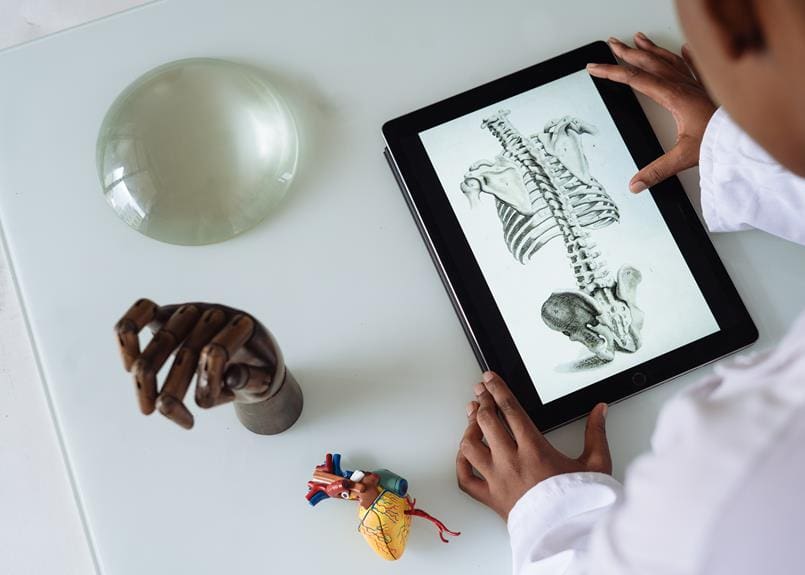What Is Woman Sexual Anatomy and Variations

Welcome to the fascinating world of female sexual anatomy and variations. Like a beautifully intricate tapestry, the female body is adorned with a myriad of unique and awe-inspiring features.
In this article, we will delve into the basics of female sexual anatomy, exploring the different parts of the vulva and shedding light on the mysteries of the clitoris.
We will also examine the role of the vagina in female sexual pleasure and explore lesser-known variations that make each woman beautifully unique.
Join us on this enlightening journey of discovery and understanding.
Key Takeaways
- Female sexual anatomy and function is complex and involves both physiological and psychological factors.
- The appearance of the vulva can vary significantly among individuals, and discussions about vulva aesthetics challenge societal norms.
- Cultural influences shape perceptions of beauty and femininity, including ideals of vulva appearance.
- Understanding variations in vaginal anatomy and hormonal levels is crucial for promoting vaginal health and providing tailored care and support.
The Basics of Female Sexual Anatomy
The article provides a comprehensive overview of the basics of female sexual anatomy, highlighting the various structures and functions that contribute to a woman’s sexual experience. Understanding female sexual anatomy is essential for healthcare professionals serving women, as it enables them to provide appropriate care and support.
One crucial aspect of female sexual anatomy is the female sexual response, which involves a complex interplay of physiological and psychological factors. It is important to note that clitoral stimulation plays a significant role in female sexual response and pleasure. The clitoris, a highly sensitive organ located at the top of the vulva, contains thousands of nerve endings and is considered the primary source of sexual pleasure for many women. Understanding the importance of clitoral stimulation is essential for promoting sexual satisfaction and well-being in women.
Transitioning to the subsequent section, we will now explore the different parts of the vulva.
Understanding the Different Parts of the Vulva
Understanding vulva structure is crucial for healthcare professionals to provide comprehensive care to women. By promoting understanding and awareness of the different parts of the vulva, healthcare professionals can empower women to take control of their sexual health and well-being.
Here are three key ways healthcare professionals can promote understanding and awareness of vulva structures:
- Education and information: Healthcare professionals can provide accurate and comprehensive information about the different parts of the vulva, their functions, and their role in sexual pleasure. This can help women develop a better understanding of their own bodies and enhance their sexual experiences.
- Encouraging open dialogue: Creating a safe and non-judgmental space for women to discuss their concerns and questions about vulva health and hygiene is essential. Healthcare professionals can foster open dialogue by actively listening, providing reassurance, and addressing any misconceptions or anxieties.
- Normalizing variations: It is important for healthcare professionals to normalize the natural variations in vulva structures. By emphasizing that there is no ‘normal’ or ‘ideal’ vulva, healthcare professionals can help women embrace their unique anatomy and feel more confident and comfortable in their own bodies.
Exploring Variations in Vulva Appearance
The appearance of the vulva can vary significantly among individuals. This has led to discussions about vulva aesthetics and perception. Cultural influences also play a role in shaping our understanding and expectations of what a ‘normal’ vulva should look like.
Exploring these variations in vulva appearance can help us challenge societal norms and promote body positivity and acceptance.
Vulva Aesthetics and Perception
Research has shown that individuals’ perceptions of vulva aesthetics are influenced by societal norms and personal experiences. The way we perceive and judge the appearance of vulvas is heavily influenced by the standards set by society and our own unique experiences. In order to better understand this topic, let’s explore three key factors that contribute to the perception of vulva aesthetics:
- Media representation: The media plays a significant role in shaping our ideals of beauty, and this extends to the portrayal of vulvas. Idealized images often promote a certain standard of perfection, leading individuals to compare themselves and their own bodies.
- Cultural expectations: Different cultures have their own standards and expectations when it comes to vulva aesthetics. These expectations are often deeply ingrained and can contribute to feelings of insecurity or dissatisfaction.
- Personal experiences: Personal experiences, such as previous sexual encounters or exposure to different vulvas, can shape our perceptions of what is considered aesthetically pleasing.
Understanding the societal and personal influences on vulva aesthetics is crucial in order to promote body positivity and acceptance.
Cultural Influences on Vulva Appearance
An understanding of cultural influences on vulva appearance can shed light on the wide range of variations that exist. Society’s expectations and standards often shape our perception of what is considered attractive or normal. However, it is important to recognize that beauty comes in all shapes and sizes. Embracing body positivity is crucial in challenging these societal expectations and promoting self-acceptance.
Cultural influences play a significant role in shaping our perception of beauty and femininity. Different cultures may have unique ideals of what a ‘perfect’ vulva should look like, leading to a wide range of variations. By examining these cultural influences, we can gain a deeper understanding of why certain aesthetic preferences exist and challenge the notion that there is only one ‘right’ way for a vulva to look.
Now, let’s transition into unveiling the mysteries of the clitoris, another important aspect of female sexual anatomy.
Unveiling the Mysteries of the Clitoris
A comprehensive study is being conducted to explore the intricate structure and functions of the clitoris, shedding light on its enigmatic nature. As researchers delve into this topic, they aim to provide a better understanding of clitoris stimulation and its role in achieving a clitoral orgasm.
Here are three intriguing aspects of this ongoing study:
- Unraveling the anatomy: Scientists are using advanced imaging techniques to unravel the complex anatomy of the clitoris, revealing its hidden structures and connections. This knowledge will enhance our understanding of how the clitoris responds to stimulation and contributes to sexual pleasure.
- Examining variations: The study aims to explore the variations in clitoral anatomy amongst individuals, highlighting the diversity in size, shape, and sensitivity. Understanding these variations will help healthcare professionals provide personalized care and advice to individuals seeking clitoral stimulation.
- Impact on sexual well-being: By studying the clitoris, researchers hope to uncover ways to enhance sexual well-being and address any issues related to clitoral stimulation and orgasm. This knowledge can empower individuals to explore their bodies, improve sexual satisfaction, and foster healthy relationships.
As the study progresses, it promises to unveil the mysteries of the clitoris, leading to a deeper appreciation of its importance in sexual pleasure and overall well-being.
The Role of the Vagina in Female Sexual Pleasure
Numerous studies have highlighted the significant contribution that the vagina makes to female sexual pleasure, emphasizing the crucial role it plays in achieving orgasm and overall sexual satisfaction.
Understanding and prioritizing vaginal health is essential for enhancing sexual pleasure and maintaining overall well-being. A healthy vagina is characterized by proper lubrication, elasticity, and a balanced pH level. Regular exercise, a balanced diet, and good hygiene practices all contribute to maintaining optimal vaginal health.
Additionally, using water-based lubricants during sexual activity can enhance comfort and pleasure. It is important to note that every woman’s vaginal anatomy is unique, and there are variations in size, shape, and appearance. Examining these variations in vaginal anatomy can help individuals better understand their own bodies and explore different techniques for sexual pleasure.
Examining Variations in Vaginal Anatomy
Several studies have been conducted to examine the variations in vaginal anatomy, shedding light on the unique characteristics and complexities of female sexual organs. Understanding these variations is essential for promoting vaginal health and addressing the impact of childbirth on vaginal anatomy. Here are three key points to consider:
- Vaginal health: The vaginal environment is a delicate balance of pH, bacteria, and moisture. Variations in vaginal anatomy can affect this balance, leading to conditions like bacterial vaginosis or yeast infections. Understanding these variations can help healthcare providers tailor treatment and preventive measures to promote vaginal health.
- Impact of childbirth: Childbirth can have a profound impact on vaginal anatomy. The stretching and tearing of tissues during delivery can result in changes such as vaginal laxity or pelvic organ prolapse. By studying these variations, healthcare providers can better understand the long-term effects of childbirth and develop strategies to support postpartum recovery.
- Individual differences: It is vital to recognize that every woman’s vaginal anatomy is unique. Variations in size, shape, and elasticity are normal and should not be a cause for concern. By embracing these differences, healthcare providers can provide personalized care and support to women, ensuring their overall well-being.
Shedding Light on Lesser-Known Sexual Variations Among Women
In recent years, there has been a growing interest in shedding light on the lesser-known sexual variations among women, aiming to deepen our understanding of female sexuality and provide comprehensive care for all individuals.
One aspect that has gained attention is the impact of hormonal changes on vaginal health. Hormones play a crucial role in maintaining the health and function of the vagina, affecting lubrication, tissue elasticity, and overall comfort during sexual activity.
Understanding the variations in hormonal levels and their impact on vaginal health can help healthcare providers offer tailored advice and treatments to women experiencing discomfort or changes in their sexual function.
Frequently Asked Questions
Are There Any Significant Differences in the Basic Structure of Female Sexual Anatomy Among Different Racial or Ethnic Groups?
There is limited research on the influence of racial or ethnic background on the basic structure of female sexual anatomy. However, cultural influences and perception differences may contribute to variations in how individuals perceive and experience their own sexual anatomy.
How Do Hormonal Changes Throughout the Menstrual Cycle Affect the Appearance and Function of the Vulva?
Hormonal changes throughout the menstrual cycle can impact the appearance and function of the vulva. These variations are influenced by the levels of estrogen and progesterone, leading to changes in blood flow, moisture levels, and tissue thickness.
Can Variations in Vulva Appearance Affect Sexual Pleasure or Function?
Variations in vulva appearance can have an impact on sexual pleasure and function. Psychological factors play a role in sexual satisfaction, and open communication between partners is essential for addressing any concerns and ensuring mutual pleasure and satisfaction.
Are There Any Cultural or Societal Factors That Influence Our Understanding and Perception of the Clitoris?
Cultural influences play a significant role in shaping our understanding and perception of the clitoris. Societal norms, values, and beliefs impact how the clitoris is portrayed, discussed, and valued, thus influencing our attitudes and knowledge about this important sexual organ.
What Are Some Lesser-Known Sexual Variations Among Women That May Impact Sexual Experiences or Preferences?
Some lesser-known sexual variations among women can impact sexual experiences or preferences. Factors such as sexual preferences and sensitivity levels can influence how women experience pleasure and engage in sexual activities.








